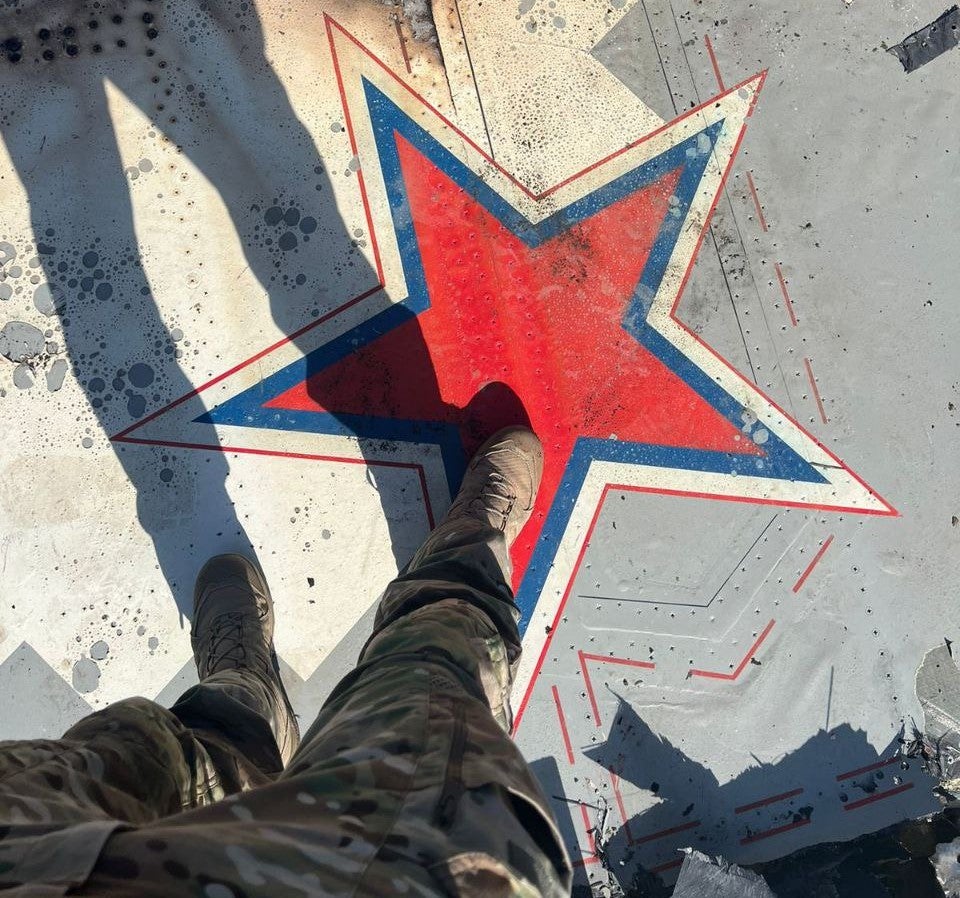Prototype Russian S-70 Stealthy Drone Crashes In Eastern Ukraine
A Russian Sukhoi S-70 “Okhotnik” stealthy unmanned combat aerial vehicle is reported to have crashed in eastern Ukraine on Saturday, with the drone allegedly shot down by another Russian aircraft.
The drone crashed in Ukrainian-controlled territory near the city of Kostiantynivka in Donetsk Oblast. Initial claims by Telegram channels affiliated with both Ukrainian and Russian militaries were soon followed by photographs of the wreckage that was initially identified as a Russian Su-25 ground attack aircraft.
However, videos of the drone being shot down subsequently confirmed its identity as an Okhotnik, and suggested that it had been shot down by a Russian aircraft trailing the drone as it left Russian-occupied territory. Subsequent photographs of the wreckage uploaded by Ukrainian bloggers include a part identifying the drone as the fourth prototype Okhotnik.
Some Russian pro-war bloggers have claimed that the drone was undergoing a trial mission over Russian-occupied territory in Donetsk Oblast when it stopped responding to commands, with an Su-57 accompanying the drone shooting it down after attempts to restore control failed. While Ukraine has accused Russia of using Su-57s to launch cruise missile attacks into Ukraine, the claims made about the sequence of events and the Su-57’s presence cannot be independently verified at this time.
The Okhotnik
Under development since 2011, the Sukhoi S-70 Okhotnik (Hunter) made its first flight in 2019. The stealthy flying wing is intended to serve as a “loyal wingman” for Sukhoi’s Su-57 stealth multirole aircraft as a counterpart to similar Western “loyal wingmen” like Boeing’s Ghost Bat, being sent ahead into hostile airspace to reduce risk to manned aircraft.
Russian state media has claimed that the third and fourth prototype Okhotniks were supposed to be very similar to the mass production version to be built once trials complete, but their completion was not publicized unlike the rollouts of the first and second prototypes.

